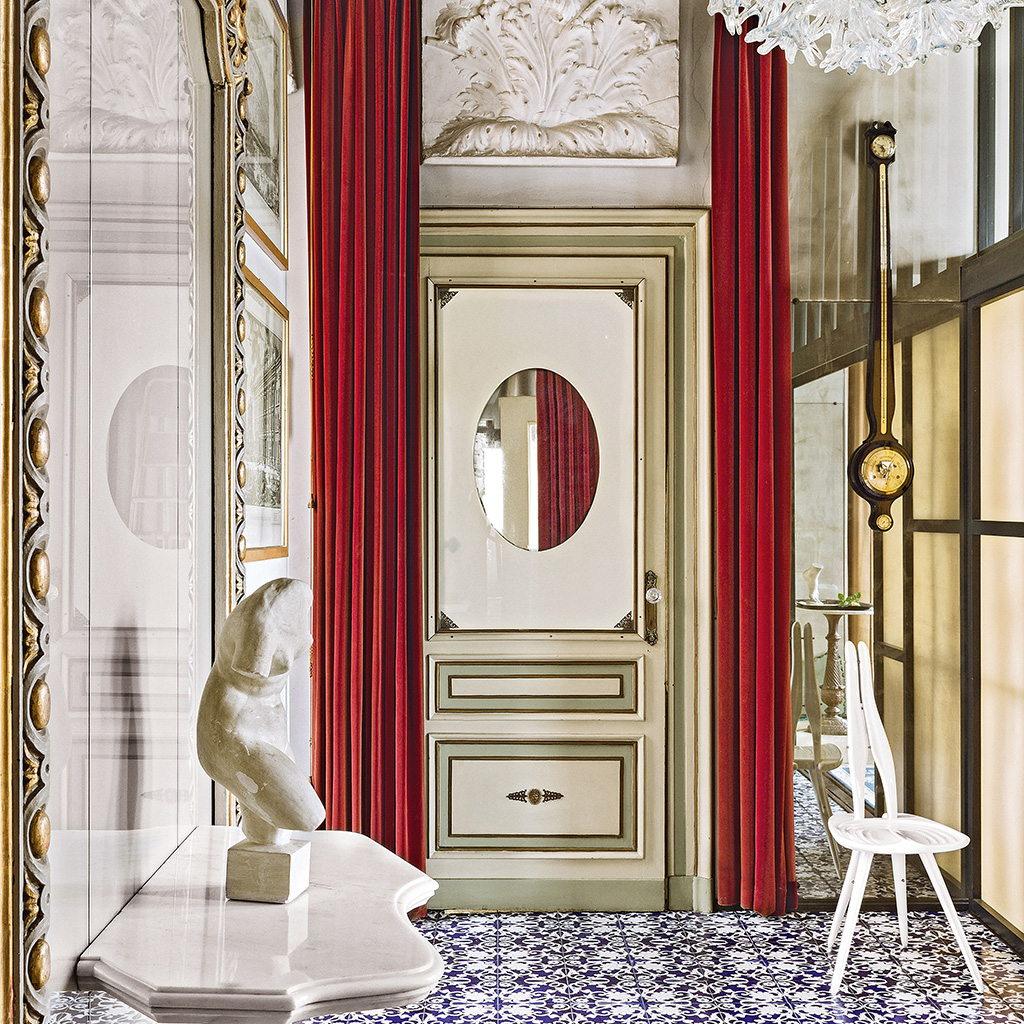Meta-, in Greek, means “beside”, “beyond”. At Metasus we reach beyond the dialogue on sustainable design and embed it into our philosophy. Metasus Design is a community of designers who share a broad outlook on sustainability. Energy efficiency, social justice, environmental protection, economic development, cultural expression--all these factors are a necessary part of sustainable design. Everything that people make--cities, buildings, tools, works of art--should reflect a holistic perspective about life on earth. Metasus designers place a high value on energy and resource efficiency, durability, adaptability, environmental health, natural diversity, craftsmanship, and cultural significance. Their work is a challenge to consumerism and the myth of limitless economic growth.
Sustainable design is entering its third generation. The first revolution, in the 70's, was driven by new ideas in passive and active solar design and the need to reduce dependence on fossil fuels. The second revolution, still underway, has been driven by improved energy- and performance-modeling technologies to improve the liveability of sustainable buildings, and to reduce our carbon footprint. The third revolution, just beginning, is more holistic. Sustainable design is not just about energy efficiency and the reduction of CO2, although these remain important.
Threats to environmental and social health are more extensive and complex than the problem of increased CO2. We see the consequences in air pollution; erosion and loss of soil fertility; destruction of natural habitat; species endangerment; scarcity of potable water; unrest due to resource competition and growing income inequality; loss of cultural heritage and identity due to generic urbanization; and the increased vulnerability of social structures due to dependence on complex technological systems.
All these threats to societies and the planet are interlinked. Sustainable design should acknowledge all of these issues as we come to realize that a multi-faceted response is likely to be the most effective. Metasus designers think across disciplines and across scales. Both traditional solutions and new technologies are useful, depending on the situation. Sustainable societies respect future generations by making the necessary adjustments to development and consumption patterns in order to pass on a world no less healthy or abundant than the one they have experienced.
Sustainable design helps everything flourish--cultures, communities, individuals, and the planet--without selfishness or a preference to any one society, generation, or species.
Philosophy
Inspiring projects
The Second Goetheanum
Rudolf Steiner’s second Goetheanum, completed in 1928, is situated in the mountainous region of Dornach, Switzerland, Steiner’s first Goetheanum was completed in 1919 and comprised primarily of sculpted wood. but after only a few years, it burned down by arson. Steiner designed the second Goetheanum as an illustration of ‘a new style of architecture. it represents a pioneering use of visible concrete in architecture, particularly in its achievement of sculptural shapes on an architectural scale.

Casa Tabarelli
Hidden in the slopes of the vineyard village of Cornaiano near Bolzano, Italy is Casa Tabarelli, a modernist masterpiece designed in 1968 by Carlo Scarpa and Sergio Los for the Tabarelli family. The spacious interior is dominated by a colorful abstract ceiling that creates rooms with varying ceiling heights. Many of the masterful works within the house combine art and function, such as the entrance gate made from orthogonal metal rods, the steel abstract kinetic sculpture, and the sliding wall with painted geometry and hinged panels.
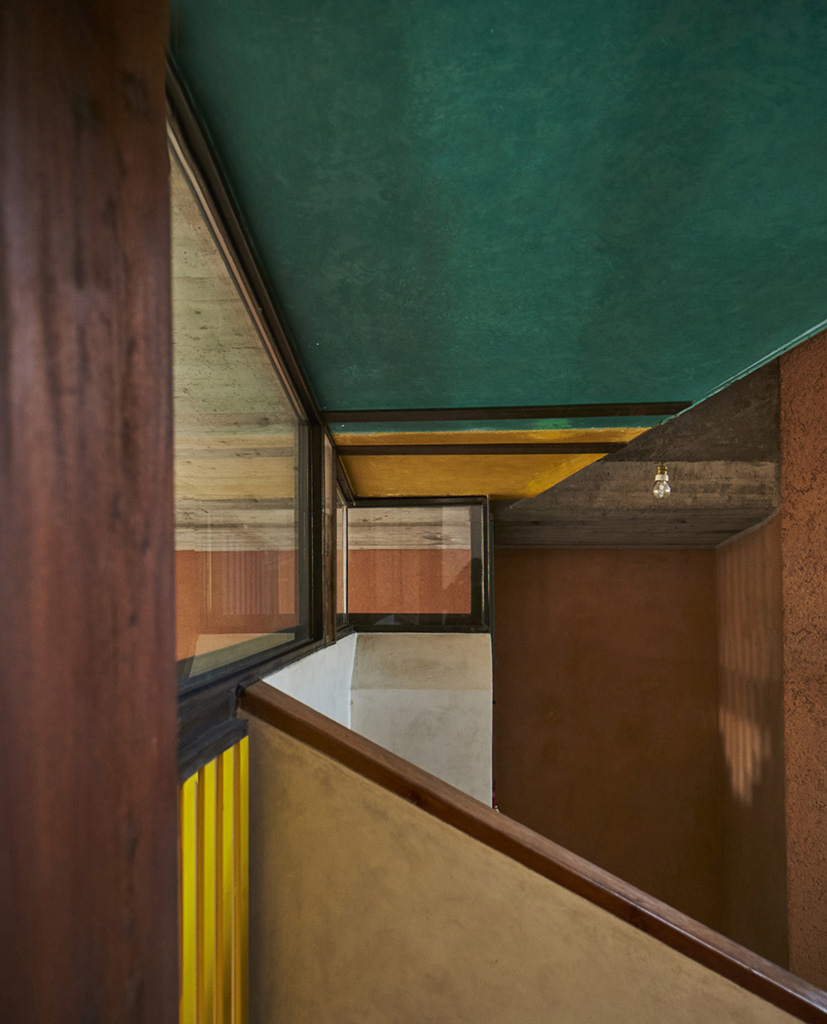
Villa for an Industrialist
House for an Industrialist, Shenzhen, 2009. This interior renovation of a 700 m² villa embodies new ideas about craft, geometry, and ornament. Installations on the ceilings, floors, and walls are built up of custom-fabricated repetitive elements: sculptural ceramic tiles, anodized aluminum branches, lacquered hardwood spindles, marble floor tiles, woven rattan panels… hundreds of these elements are arranged in non-repetitive patterns. The visitor's experience unfolds musically as he or she explores the space. One theme that emerges is the dome: from the entry vestibule to the most private spaces, various types of domes are encountered. One goal of the project was to demonstrate the high skill level of Chinese craftspeople.
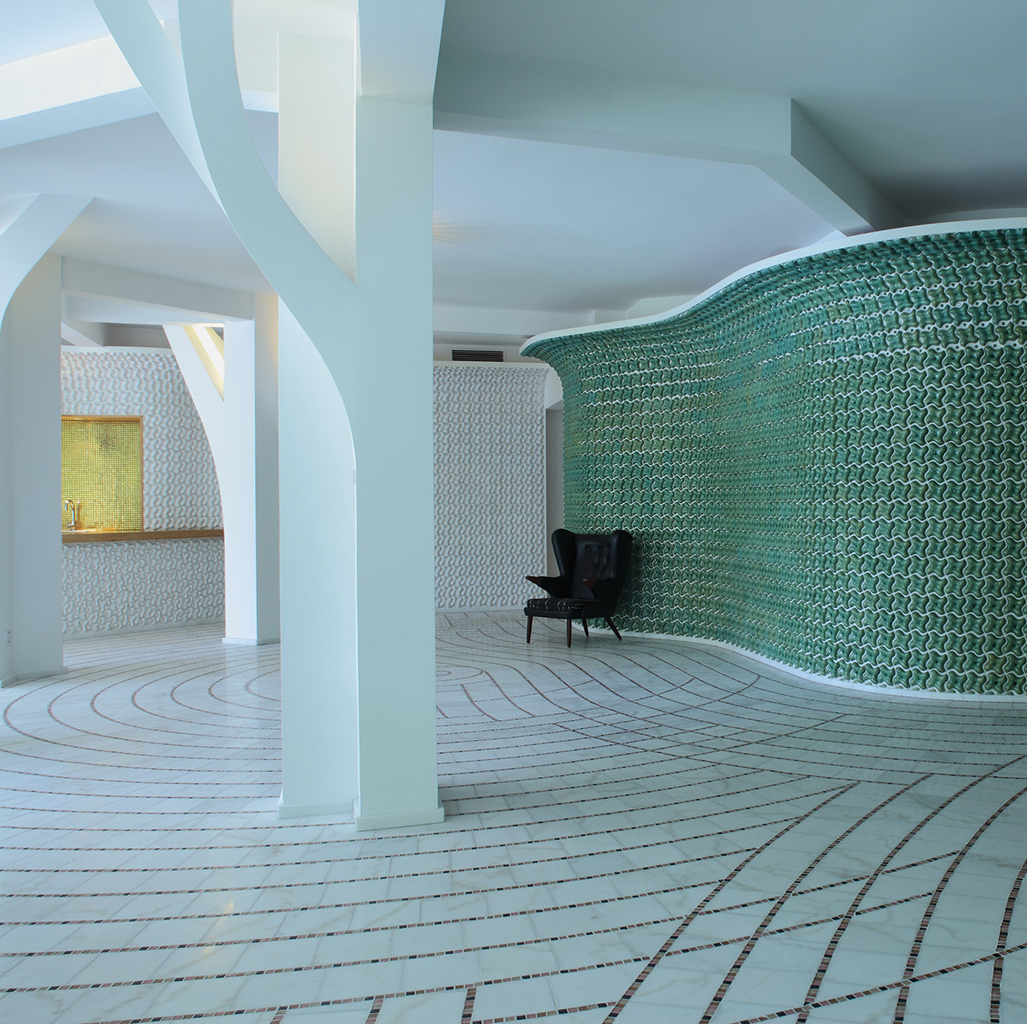
The Gallery at Sketch
Celebrated British artist, David Shrigley, has transformed the gallery at Sketch as part of a long-term programme of artist-conceived restaurants. India Mahdavi, who has created a backdrop for David Shrigley’s artwork, conceived a soothing, monochromatic, strikingly comprehensive interior. The classic, almost bourgeois design invites a deliberately playful contrast with the witty, outré art works; all is most certainly not what it seems. While matching sketch’s delight in the avant-garde, this harmonious vibe breaks with the Gallery’s usual eclecticism.
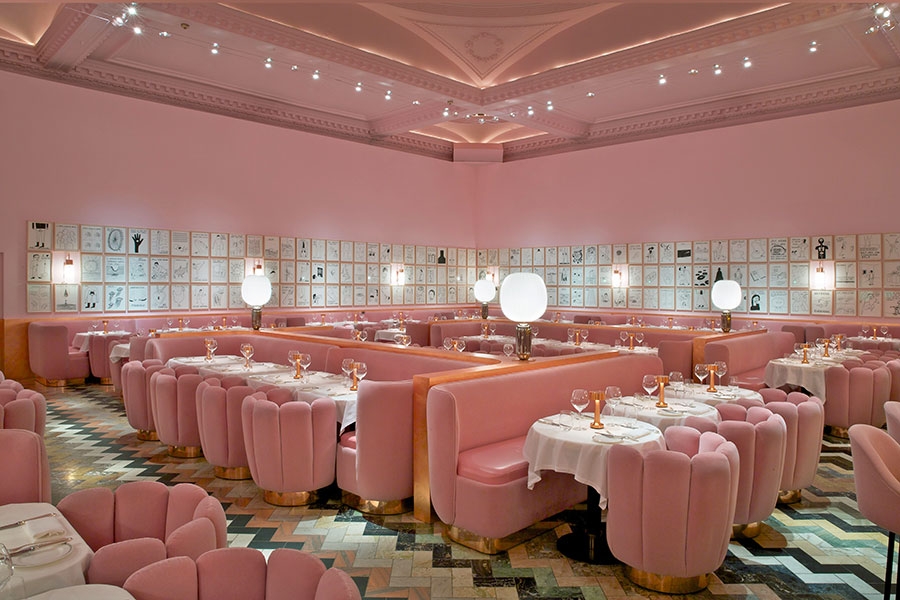
The Schaffer House
This open and relaxed kitchen in the Schaffer house by John Lautner is one of the most beautiful examples of Mid-Century modern house designs, which strive to bring the outdoors inside by using large expanses of glass, integrating with natural landscapes, and emphasizing natural materials.
Constructed largely of redwood and glass supported by red brick and concrete, the Schaffer House feels like a newly pitched tent or a wood cabin that provides shelter and privacy without boxing out nature.
Lautner designed the house for the Schaffer family, who originally used the property for picnics under the majestic oak trees and decided they wanted to live there permanently.
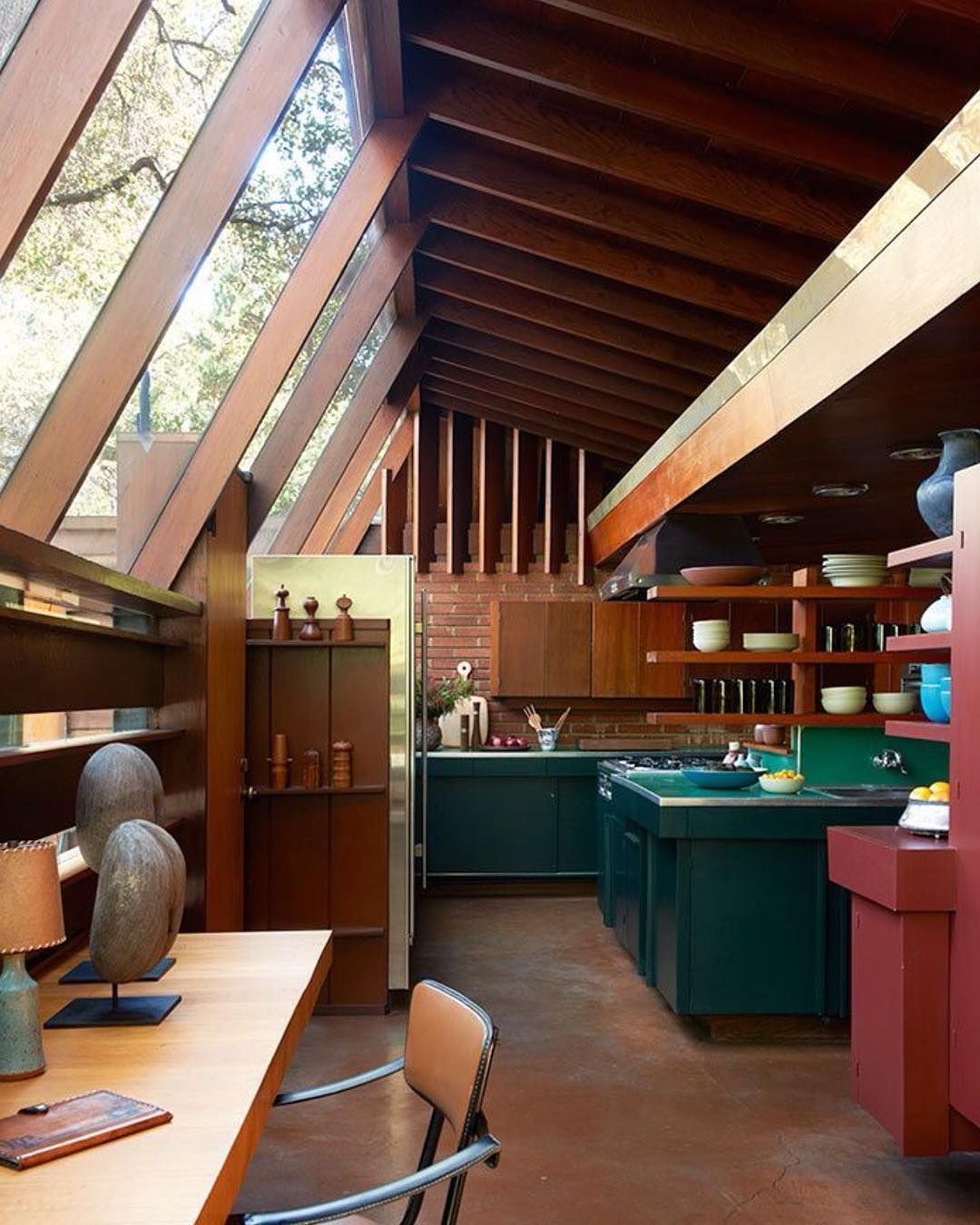
Casa Mollino
Casa Mollino remained a mystery until after the death of the designer in 1973. Only in 1999 did it pass into the hands of Ferrari, who has a similarly diverse background to Mollino, having been a chemist, restaurateur and design dealer. With the help of the meticulous inventory of the property made by Mollino’s lawyers, he was able to recreate the original appearance of the apartment and open it to the public by appointment. While renovating the interiors, Ferrari discovered the cover of a book by Mollino, titled Il Messaggio Dalla Camera Oscura (‘The Message from the Dark Room’), depicting the head of an Egyptian queen. This reference to Egyptian funerary art became the key to decoding a series of symbols, which suggest Mollino’s project was conceived in the manner of a Pharaoh’s pyramid, as an intended final resting place.
